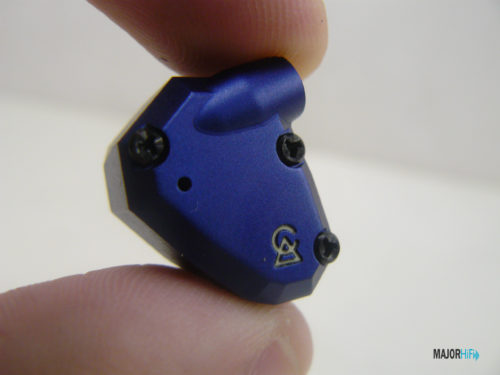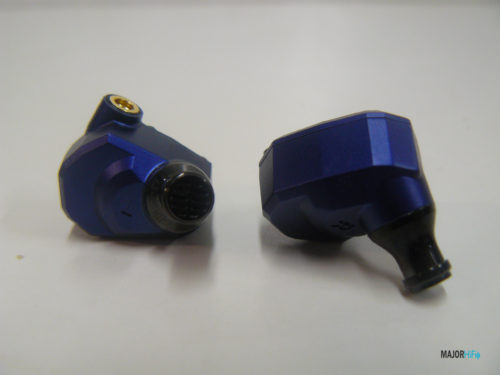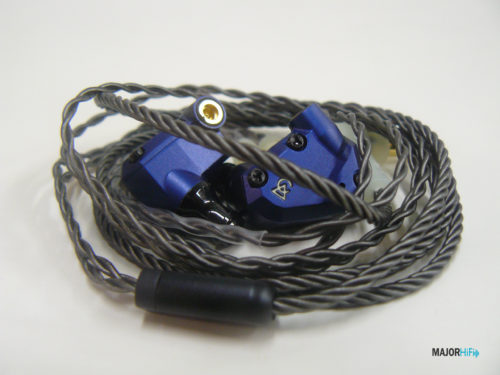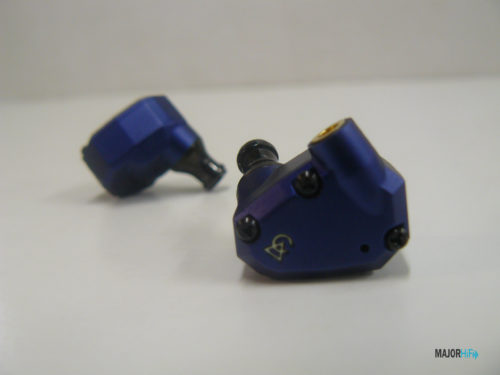Few brands have made an impact in the world of IEMs like Campfire Audio. 2021 alone has seen the release of four brand new models for many types of listeners to enjoy. The Satsuma and Honeydew were two budget-friendly models that supplied a specific type of audiophile experience with distinct sound signatures. When I reviewed both, I found that the Honeydew had a much darker, bass-centric timbre compared to the Satsuma’s natural output. Now we have Campfire’s new crop of IEMs, the Mammoth and Holocene. Campfire announced these new earphones only a month after the last main releases. This time, Campfire aims for a mid-tier price range. Let’s start with the $549 Mammoth. Being the cheaper of the two, let’s see what the Mammoth brings to the table.

What You Get
- Campfire Audio ‘All-Seeing Eye’ SEAQUAL® YARN Earphone Case. Made in Portugal.
- Campfire Audio Smoky Glow Litz Cable – Silver Plated Copper Conductors with Berylium Copper MMCX and 3.5mm Stereo Plug
- Final Audio Tips (xs/s/m/l/xl)
- Campfire Audio Marshmallow Earphone Tips(s/m/l)
- Silicon Earphone Tips (s/m/l)
- Campfire Audio CA Lapel Pin
- Cleaning Tool

Look and Feel
Campfire Audio has gone back to their most popular housing design, seen on IEMs like the Andromeda and Ara. Most importantly, the Mammoth shares its closest resemblance to the now discontinued Polaris, which this model is replacing. This time it takes on a “frozen tundra blue” which is a nice solid color for the Mammoth’s anodized aluminum shell. To me, this angular build is Campfire’s most identifiable design, and one of their most durable. The style of the nozzle makes it so the tips easily fit, and the housing stays secure within your ear. Its housing will rise firmly inside the cavity in your ear, and cause no discernable obstructions while listening. Wearing the Mammouth for long periods of time is a breeze, with minimal fatigue to be had. One of Campfire’s newest prospects is introduced in the Mammoth, and it’s a rather fun one. The inlays of the Mammoth, as well as the “Smokey Glow” cable, glow in the dark. It’s a cool aesthetic flourish that gives the Mammoth a unique identity, and who doesn’t enjoy things that glow in the dark?

Design
The Mammoth is a hybrid IEM. It supports a single custom 10mm dynamic driver, as well as a high and mid-balanced armature. With the dynamic unit comes a bio-cellulose diaphragm which gives the Mammoth a technical brawn to deliver a strong signal. With the Mammoth, it’s all about delivering a stable performance, and the 3D printer acoustic chamber aims to achieve that.

Output
You can always expect a strong signal from Campfire audio, but the Mammoth brings a new level of power to your music. You’ll be able to run them without any issue through most standard 3.5mm connectors. The signal always has a consistently big output, with more than enough amplitude. Adjustments in gain are welcome, but high enough volumes could prove to be harsh for your ears.

Soundstage
One of my biggest reservations about the Satsuma and Honeydew was their pickiness. With the Mammoth, it seems like Campfire Audio is continuing that idea. The Mammoth is a dark IEM, but not as dark as the Honeydew. When it comes to the soundstage, the Mammoth is a lot more complete of a sound. The imaging is wider and the layering is a lot more deep and articulate. The sounds appear very forward though, with the separation feeling like it comes right to the edge of each sound. There’s still an immersive quality to them, but spatial imaging can feel limiting at times, especially when it comes to large effects. Listening to tracks like “Comedown” by Tashaki Miyaki, I don’t feel like I’m getting enough of the reverberance and reflection that the spatial imaging is trying to communicate. On the other hand, the clarity of the image is pristine. Instruments and effects appear in the mix with crisp resolution and fidelity.
Low End
The main attraction of the Mammoth is going to be is its heavy bass response. It is an impactful tonality that resembles the Honeydew as well as the former Polaris. Bass frequencies grind deep and resonate with a present thickness sure to make any bass-head happy. There’s a certain crunch to the mid-bass that I was particularly satisfied with as well. Tracks like “Aletheia” by Years of No Light brought guttural tones to the low end, making it perfect for all sorts of Metal and Electonic music. Even though it’s the most dominant feature on the Mammoth, it doesn’t form a cloud of muddiness as some other bass-head IEMs do.
Mids
Due to the v-shaped nature of the Mammoth, the midrange doesn’t get as much presence and detail. The low and high mids are properly accentuated, giving character to certain sound elements, but full instrumentations can never feel whole. The warmth of the low-mids does the job of giving the frequencies body and lift, but in response comes off as notchy. Although the mids aren’t given a great shape, the high mids give a good emphasis and forwardness to the sound. Vocals are given great clarity and depending on the register, a commanding presence.
Highs
On the other end of the V, you receive some very colorful treble frequencies. I was particularly happy with the way the highs showcase their sparkly timbre and blissful resonance. With a darker IEM, you don’t normally get that type of signature, especially not on an IEM. However, Campfire has successfully delivered an emphasized treble without trending into sibilance and harshness. The frequencies are easily digestible, with minimal brightness and maximum glisten.
Summary
Like the Polaris before it, the Mammoth takes its place as the ideal mid-tier IEM for those looking for something between consumer and high-end. It’s got a familiar design with an aesthetically pleasing coloration. The cable is much improved and helps produce a powerful level of volume. The sound signature has many quirks. Its v-shaped sound signature offers punch, thick bass, and sweet treble to devour. For its price, there are sure to be many options, but if you’re sold by Campfire, the Mammoth is a great IEM for your collection. And they glow in the dark!
Pros and Cons
Pros
- Sleek design
- Secure fit
- Powerful output
- Thick bass
- Sparkly highs
Cons
- Average soundstage
- Recessed mids
The Campfire Audio Mammoth is available at Audio 46.
MAJORHIFI may receive commissions from retail offers.








